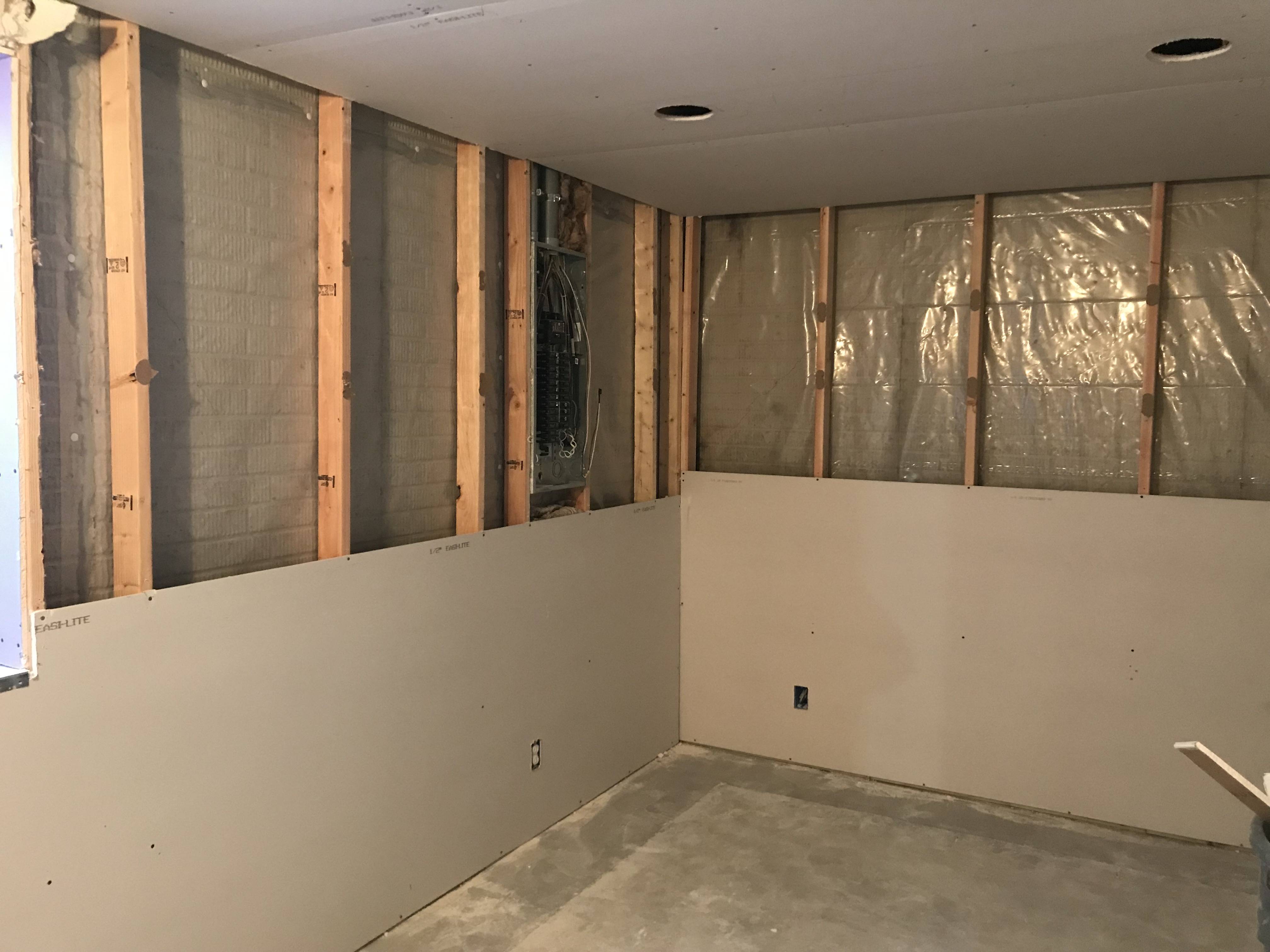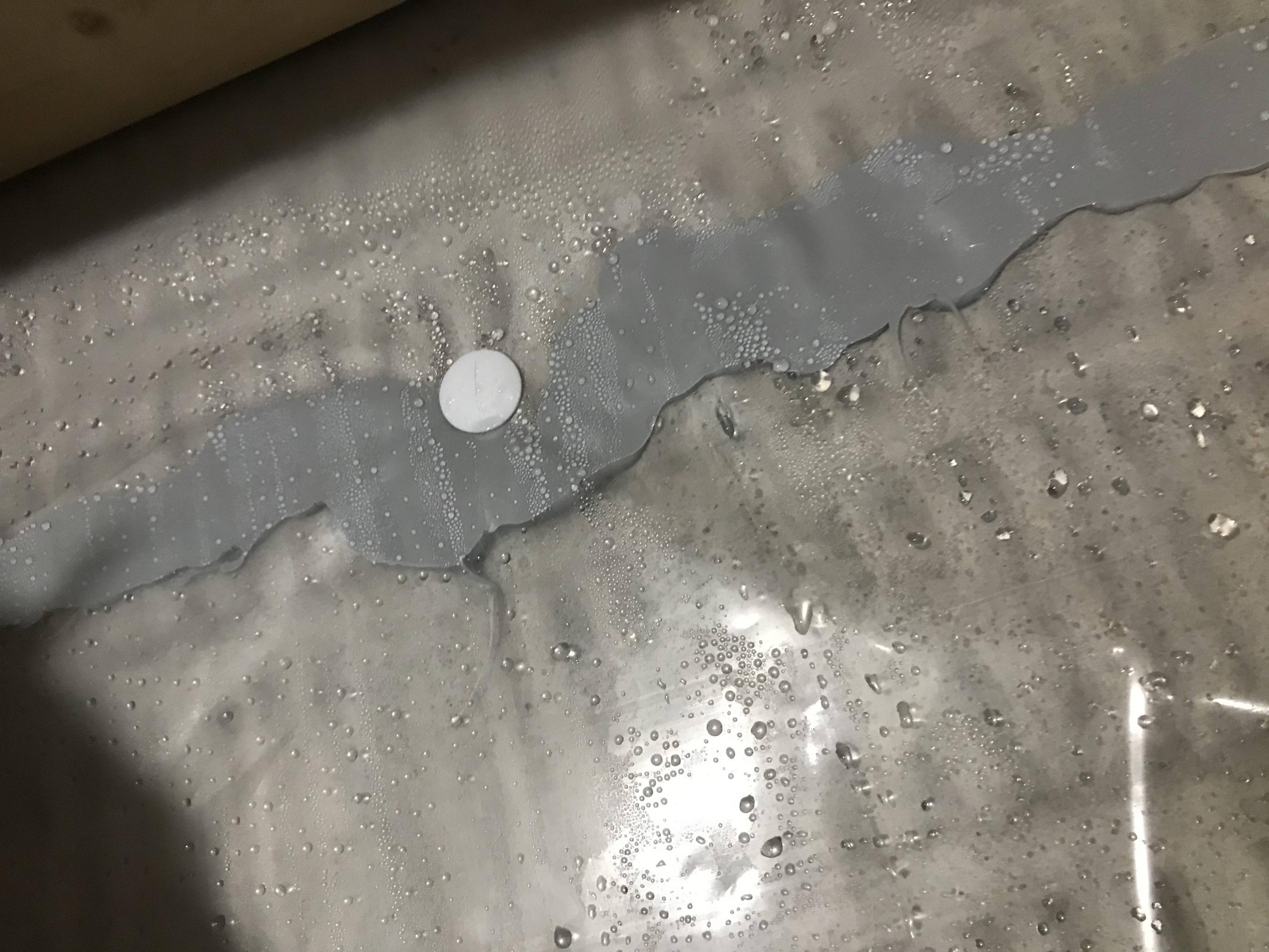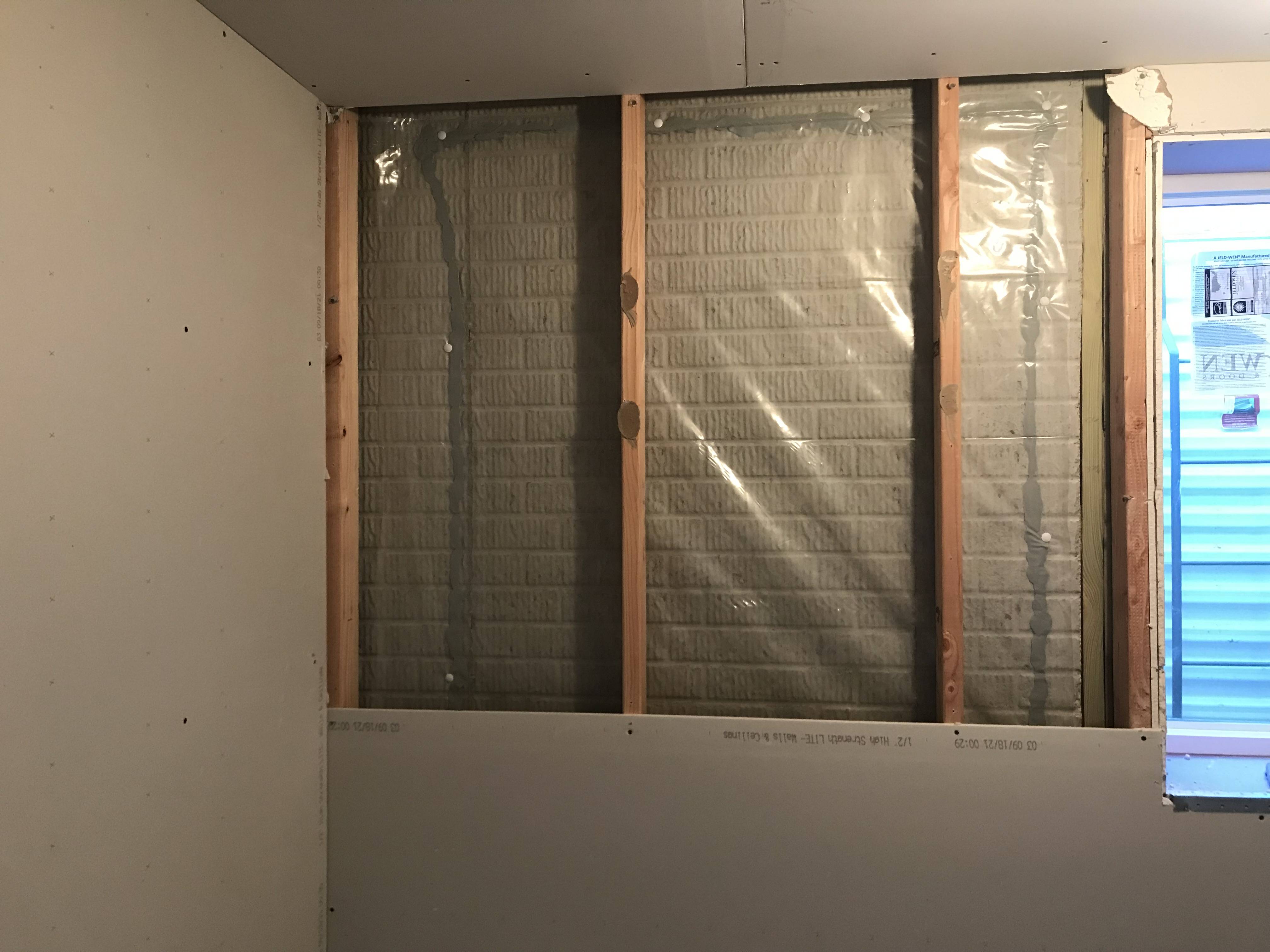Climate Zone 5A (Eastern Nebraska)
I’m needing guidance on properly insulating basement walls that already have 6 mil poly fastened to the wall as part of a basement perimeter drain system. I recently noticed condensation on the warm side of the 6 mil poly (not between the poly and poured concrete wall) and am unsure how to proceed. (basement humidity is around 50%, basement air temp around 63 degrees F, outside temp is currently 20 degrees F)
Over the summer I installed a basement perimeter drain like in the attached picture. As part of the system, I covered the walls in 6 mil poly. The 6 mil poly is tucked inside the dimple mat at the bottom and then mechanically fastened at the top with Christmas tree fasteners. I then sealed the top of the 6 mil poly with a sealant and taped the bottom of the 6 mil poly to the dimple mat. This system has been in place for 6 months and appears to have taken care of my damp basement.
However, I recently started to finish my basement. Since I had the 6 mil poly on top of the poured concrete walls, I made the incorrect assumption that I could simply put in fiberglass batt insulation within my 2×4 cavities. Only after getting all of my drywall up did I notice condensation on the warm side of the 6 mil poly (not between the poly and poured concrete wall). The condensation is only on the top 1 foot of my poly with no current signs of condensation below that. The fiberglass batts are obviously wet, so I’ve since pulled off much of my drywall and removed the fiberglass batts in those areas.
While I have a few thoughts on how to remediate, I’m truly not sure what the best option is. I’m also very open to any other ideas you may have.
Instead of filling my 2×4 cavities with fiberglass batt insulation, replace it with rigid foam board within each cavity.
Move all of my exterior 2×4 walls in 1.5″. Then, slide 1.5″ rigid foam board behind the 2×4 walls, creating continuous insulation from the floor to the rim joist. (this is costly and time consuming, but willing to consider if no better alternative)
Remove all of the drywall and spray foam all exterior walls. However, I had someone tell me this was not a good idea as the spray foam will not stick to my 6 mil poly. I also don’t have much space behind some of my walls to allow the spray foam to create a continuous insulation barrier behind the 2×4 wall.
Please also notice that I have open floor trusses. As a result, there is exposed concrete wall above the top of my 2×4 walls. So, while insulating each 2×4 cavity seems appropriate, it doesn’t address the remaining concrete above my 2×4 wall.
At this point I’m fairly desperate and can’t help but feel like I messed up my insulation from the beginning. I would sincerely appreciate any advice you might have! Thanks in advance!





